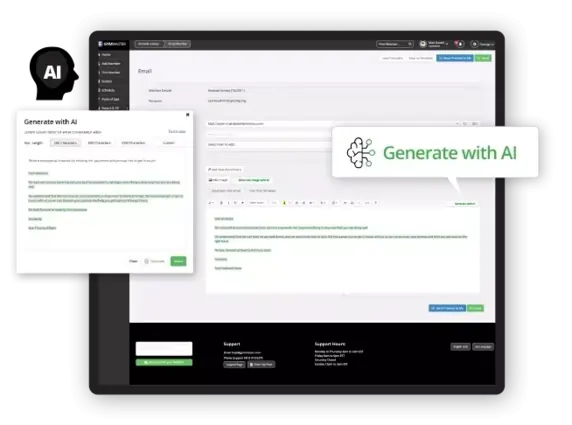すべてのモバイルデバイスで簡単に使用可能
ジムやヘルスクラブのメンバー管理に最適のソフトウェア
GymMaster は、メンバーとそのメンバーシップの詳細な記録の維持、クラスとトレーナーの予約、売上の処理と追跡、適切なタイミングで適切なメンバーとの一括コミュニケーションを容易にするように設計されたジム管理ソフトウェア です
あらゆる規模のクラブに対応するよう設計されたこのジム管理ソフトウェアには、多種多様な機能が備わっています。 完全なジム予約システム、POS 販売管理、Webサイトとの統合、決済サービスプロバイダーとの統合、 スタッフとメンバー向けのモバイルアプリ、オンライン予約、24時間365日のドアアクセスコントロール など、 GymMaster はジムをより効率的に運営するために必要なすべてを備えています。詳しくはこちら
110+
COUNTRIES USE
GYMMASTER
180k+
ACTIVE USERS
WEEKLY
3m+
memberships
managed
$40b+
payments
processed

4.7 RATING
GymMaster は世界をリードする数千のジムを支えています

![]()
"このジム管理ソフトウェアはビジネスを構築するための全てのツールを提供してくれています。新しいビジネスのオーナーとして、このソフトウェアはとても使いやすく、GymMaster なしでどうやってジムの運営と管理をするかが想像できないほど有益であると感じています。"
Gideon Lemmer, Bodyapeel Mandurah, オーストラリア
![]()
“ジムをオープンして4ヶ月が経ちました。 GymMaster は素晴らしいオープン日を実現するために、開業の準備中に常に協力してくれました。何か必要なときにいつでも利用できるサポートシステムは素晴らしいです!”
Joe Laxton, Joe’s Gym, アイオワ州 アメリカ合衆国
![]()
“メンバーの計測値を追加できることや、クライアントがオンラインで予約できることがとても気に入っています。見た目もプロフェッショナルです。”
Melissa Percival, Peak for Life, ニュージーランド








